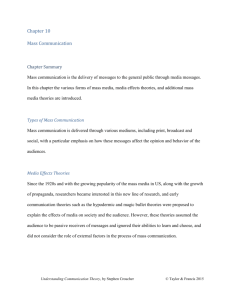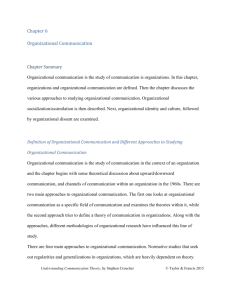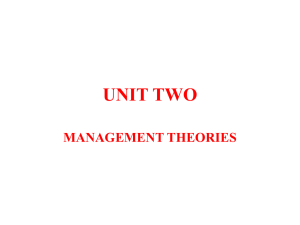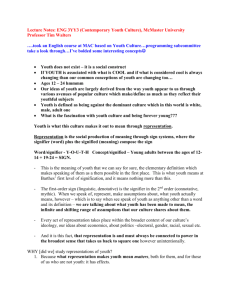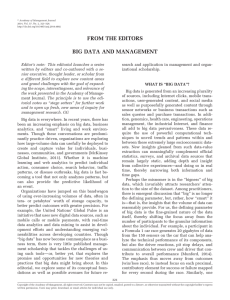Introduction to Communication Theory
advertisement
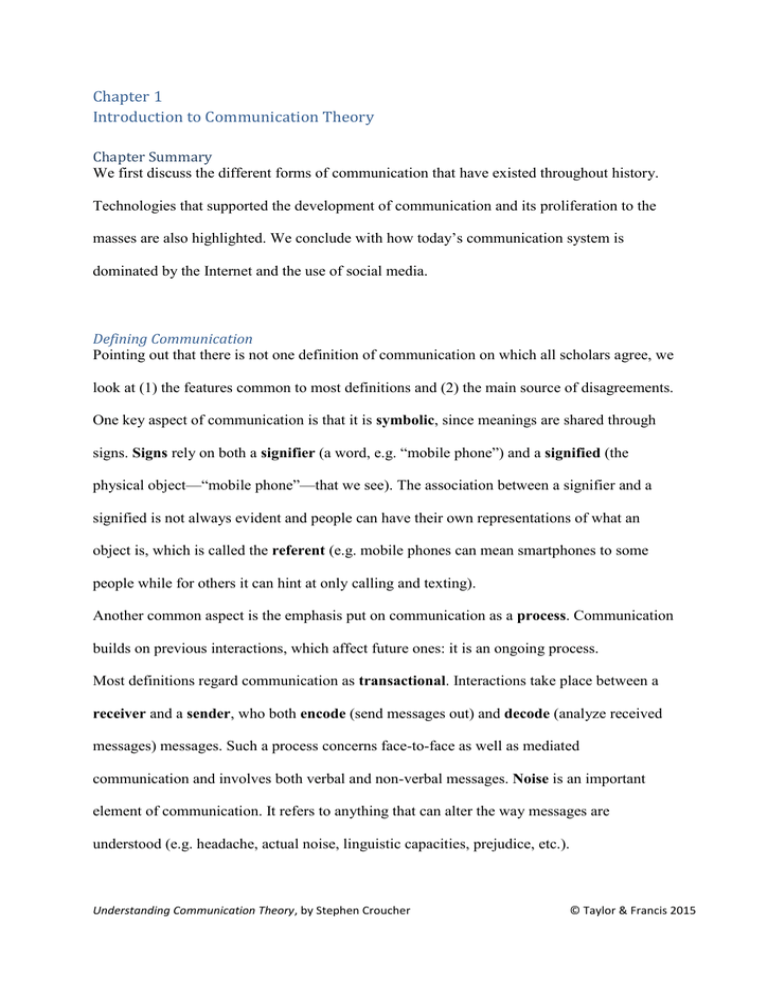
Chapter 1 Introduction to Communication Theory Chapter Summary We first discuss the different forms of communication that have existed throughout history. Technologies that supported the development of communication and its proliferation to the masses are also highlighted. We conclude with how today’s communication system is dominated by the Internet and the use of social media. Defining Communication Pointing out that there is not one definition of communication on which all scholars agree, we look at (1) the features common to most definitions and (2) the main source of disagreements. One key aspect of communication is that it is symbolic, since meanings are shared through signs. Signs rely on both a signifier (a word, e.g. “mobile phone”) and a signified (the physical object—“mobile phone”—that we see). The association between a signifier and a signified is not always evident and people can have their own representations of what an object is, which is called the referent (e.g. mobile phones can mean smartphones to some people while for others it can hint at only calling and texting). Another common aspect is the emphasis put on communication as a process. Communication builds on previous interactions, which affect future ones: it is an ongoing process. Most definitions regard communication as transactional. Interactions take place between a receiver and a sender, who both encode (send messages out) and decode (analyze received messages) messages. Such a process concerns face-to-face as well as mediated communication and involves both verbal and non-verbal messages. Noise is an important element of communication. It refers to anything that can alter the way messages are understood (e.g. headache, actual noise, linguistic capacities, prejudice, etc.). Understanding Communication Theory, by Stephen Croucher © Taylor & Francis 2015 A main source of disagreement between the definitions is whether communication is intentional or not. Some scholars argue we cannot not communicate, since all behavior is communication. Other researchers distinguish communication that is intentional from that which is not. Symptomatic behaviors refer to behaviors (e.g. a yawn) that are not meant to influence receivers. Analogic behaviors are behaviors (e.g. a fake or emphasized yawn) used to consciously send a message. The second main source of disagreement deals with communication being a social activity. The question raised is whether communication needs more than one person to take place. Intrapersonal communication, communication within one individual, is labelled by some scholars as cognition or psychology rather than communication. Other scholars regard it as communication because it is a practical means to do something—share thoughts, emotions, and information. Why Study Communication? As communication is an integral part of our lives, studying it can help better understand how it functions and eventually find ways to better communicate. It is also a way to broaden one’s views by becoming familiar with different ways of knowing and seeing things. On a practical level, understanding communication can help one in the job market. The Communication Discipline Communication is a relatively new discipline in colleges and universities. Up until the 1940s, much communication research was conducted under other fields from the humanities to the social sciences. As communication as a discipline grew, it fragmented into numerous units that focus on specific areas of communication. Understanding Communication Theory, by Stephen Croucher © Taylor & Francis 2015 Outline of the Book Chapters 2 through 4 present the different approaches to theory (social scientific, interpretive, and critical/cultural). Chapters 5 through 13 present theories that are overwhelmingly considered communication theories. Each chapter also includes a case study and a student paper that show ways to concretely apply the theories from each chapter. Understanding Communication Theory, by Stephen Croucher © Taylor & Francis 2015

